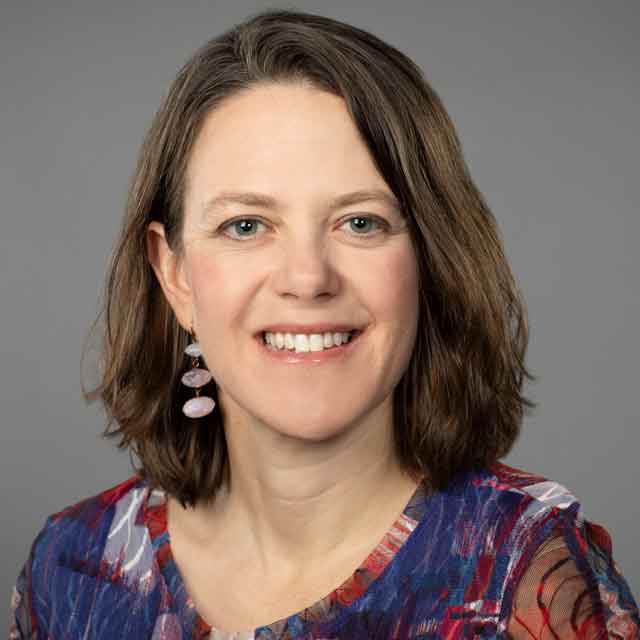Celebrating International Women in Engineering Day
From seeking inspiration to wanting to make the world a better place, women need to continue to seek opportunities in STEM
There are great opportunities for women in STEM, but many women are still treated differently in STEM professions. I’ve experienced students responding to me differently than they do to my male colleagues. And I’ve seen male colleagues operate in “good-ole-boys clubs” and unintentionally leave women out of their academic collaborative endeavors. But none of that diminishes the value of the meaningful work and fulfilling career that can come in engineering.
So what’s my advice for getting through the toughest days, whether they be because of your gender or because engineering is a demanding discipline?
Rise above it.
I see successful and strong women as those that speak their minds with confidence, but are respectful and willing to compromise. Women are exceptional leaders in engineering and academia when they skillfully execute some of their inherent traits: compassion and empathy, organization, and careful listening. Some women are able to synthesize the dialogue in a room full of people and bring about consensus. Women should avoid the tendency to pick up others’ slack and let everything fall on their shoulders.
How do you want to make the world a better place?
As an academic and research faculty member in the Civil and Environmental Engineering Department, my research focuses on development and implementation of structural systems for buildings and bridges that can better resist damage during an earthquake. One of the most effective solutions is seismic isolation, wherein the structure is supported on flexible isolation devices such as rubber or friction bearings that absorb the energy of the earthquake. Seismic isolation is not new (our historic Mackay Mines Building is supported on rubber bearings), but it is expensive and poses significant detailing challenges.
Several years ago, I led a shaking experiment of a full size base-isolated building. The test was intended to be a culminating proof-of-concept, but instead led to a heightened understanding of the influence of vertical shaking on the building’s nonstructural components (e.g. walls, ceilings, piping, equipment that are not part of the load resisting system). As a profession, we are just beginning to understand and develop solutions to mitigate the effects of the vertical components of shaking.
Other solutions that can reduce the structural damage due to an earthquake are still in development. In one of my current projects, we are investigating a new structural system that uses massive timber rocking walls that rock up off the foundation and are recentered by forces that develop in post-tensioning bars passing vertically through the walls. My research group is also investigating solutions to reduce earthquake damage in nonstructural components, which tends to dominate financial losses in more frequent, moderate earthquakes. For instance, we are investigating specialized connections that will protect stairs by allowing them to move independently of the floor-to-floor motion. These and other solutions will be investigated next year in a shaking test of a 10-story mass timber building.
Stay inspired
As academics, we are motivated by the satisfaction that our work has impact. Distinguishing oneself seems increasingly elusive now that publishing online is cheap and easy, and publication quantities have grown at an exponential rate. I cannot always predict what work will get noticed, but I make sure each paper has a unique message that is articulated clearly and concisely. Nonetheless, at times I doubt that my work is having much impact.
To keep going, I hold onto inspirational moments, such as when I was traveling to New Zealand on sabbatical and met several engineers that had read my papers, including one who claimed to have based the design of a building on a simplified procedure that I had published! That simplified procedure, incidentally, has been adopted into ASCE 7-16 standard for design of buildings and other structures, after careful review and vetting from the code committee.
Appreciate your strengths
I think there are two types of people that might find engineering to be a good fit. First, the theorists: those with a natural affinity and love for solving math and applied math problems. This was me to a tee. Second, the tinkerers: those who find themselves fascinated by taking things apart, working on their bikes, building creatively with construction toys like Legos or K’nex. This was not so much me. My inclination to theory influenced how I developed and even now I can see my own self-theorist dominating over the tinkerer.
Our engineering curriculum emphasizes the theoretical, especially in the early years, and I sometimes find the tinkerers in my office questioning their career choice. If the tinkering intuition is strong enough, I tell them, then hang in there. Both theorists and tinkerers develop into good engineers, and we need both. Our best engineering solutions are developed by teams of engineers with different skills and perspectives working together.
Seek opportunities confidently
I celebrate the fact that there are special opportunities for women that can help overcome the barriers to being female in a STEM field. I knew from about middle school on that I wanted to pursue a career in STEM. I didn’t have much of a concept of engineering beyond applied math and science, but at one point my mother suggested that engineering might be a good career for me and that comment stuck.
There were several other pivotal influences along the way: encouraging teachers and fun math and science-based extracurriculars, and a meaningful undergraduate research experience that led to my first coauthored journal paper. When I was admitted to Caltech, I was offered an expenses paid trip to visit the campus during pre-Frosh weekend. I excitedly accepted the opportunity and instantly fell in love with this quirky place that celebrates geekism. I later learned that all admitted women were offered the opportunity to visit for free. Later on, I might not have pursued my Ph.D. if I hadn’t been granted the prestigious NSF Graduate Research Fellowship. Again, it was well known that this program reserves a special pool of funds for women in engineering.
As women, we should not feel shy about capitalizing on such opportunities for ourselves and passing them on to others. There is a real need for the unique skills and perspective of women, and the engineering field will be best served by further cultivating an inclusive environment.














